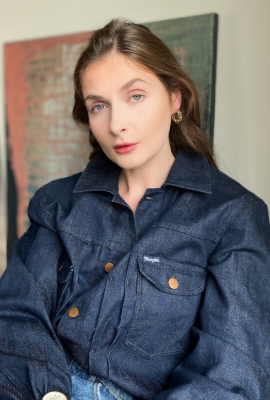The Nordic region's challenging economic conditions—characterised by rising inflation, higher interest rates, weakening currencies, and stagnating employment—have lowered consumer confidence and deepened anxieties around financial security. In response, fashion retailers have leaned heavily on frequent discounting and expanding outlet offerings to stimulate sales throughout 2023 and 2024, catering to a consumer base that increasingly prioritises high-quality, branded goods at more accessible price points. This transition of consumer values, with a clear focus on both quality and affordability, has also driven a marked surge in the second-hand fashion market, which has gained significant traction in recent years.
Rising financial concerns among Nordic consumers, driven by Gen X
38% and 26% of Swedes and Danes, respectively, expressed concern about their financial situation in 2024
Source: Euromonitor International’s Voice of the Consumer: Lifestyles Survey, fielded January to February 2024
Additionally, 20% of respondents indicated higher debt and lower savings levels in 2024 compared to the previous year, signalling higher financial strain.
Consumer insights into spending and saving trends are strongly reflected in the dynamics of the Nordic fashion retail market of the past few years. Although volume fluctuations on the negative side are typical in the region, particularly in Sweden, the economic climate of recent years resulted in more pronounced declines than usual.
Compared to 2021—a year before the global surge in unit prices in 2022—the retail value of the apparel and footwear market in the Nordics grew by 4% in 2024, while Western Europe recorded an increase of 17% in euro terms
Source: Euromonitor International
The same pattern emerges in volume sales: while Western Europe saw a modest increase of a few percentage points, the Nordics experienced a slight decrease in sales volume. Sweden, which has seen the sharpest rise in fashion unit prices, witnessed the most significant decline in apparel and footwear volume, with sales dropping by 2%, making it the country most impacted by the price increases.
Frequent second-hand buyers in the Nordics that purchase used items every few months increased by four percentage points to 27% in 2024 compared to 2019
Source: Euromonitor International’s Voice of the Consumer: Lifestyles Survey, fielded January to February 2024
In contrast, consumers that never purchased pre-owned goods decreased by 4 percentage points to 15%, indicating that a larger share of the population in the region tend to choose second-hand over new.
Looking ahead, the economic climate and evolving sustainability regulation will further drive the shift towards more mindful spending and fuel the appeal of second-hand clothing across the Nordics. Market players that adapt to these shifting values by expanding services that make their business model more circular will be better positioned and more resilient in future.
To learn more about the shifts in consumer behaviours in our report and their impact on fashion, please read Where Consumers Shop for Apparel and Footwear or World Market for Apparel and Footwear.
